This morning I attended a webinar about MEMS and IC co-design from a company called SoftMEMS along with Tanner EDA. I learned that you can co-design MEMS and IC either in a bottom-up or top-down methodology, and that this particular flow has import/export options to fit in with your mechanical simulation tools (Ansys, Comsol, Open Engineering) as well.
Webinar Overview
The presenter today was Mary Ann Maher, founder of SoftMEMS. They’ve extended the Tanner EDA layout editor to include 3D MEMS designs, which have been used since 1997 by many companies around the world.
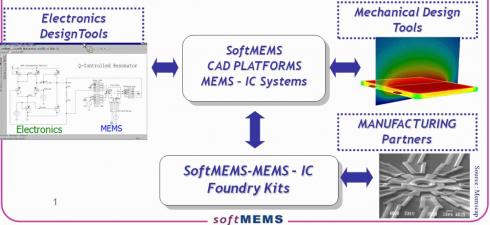
Live Demo: Using L-Edit with customizations from SoftMEMS, the design is a Heat Actuator layout. A new menu has been added by SoftMEMS in L-Edit for 3D models.

You can define the 3D materials based on foundry properties. The Technology Manager allows you to define the layers in your process to fabricate MEMS. Most fabrication steps are pre-defined by the foundry and personalized by SoftMEMS, or you can do research an add your own processing steps to define a MEMS structure.
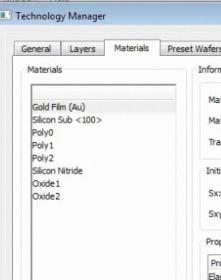
MEMS 3D process could be modeled for Solar Cell devices, IC, etc.
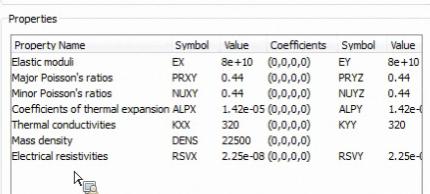
You can import models from etching simulators, or SolidWorks (external SAT model).
Stepping through each 3D process step and view the effects in L-Edit. SoftMEMS has added a new 3D toolbar to L-Edit. Familiar L-Edit methodology is used with new 3D menus so there’s little learning curve for Tanner users. View 2D cross-sections of any 3D structure by placing a vertical or horizontal line across it. Export your 3D model to a mechanical simulator (.sat format – SolidWorks, Comsol, Ansys, Open Engineering). Ansys .MAC format, and IGES formats can be exported.

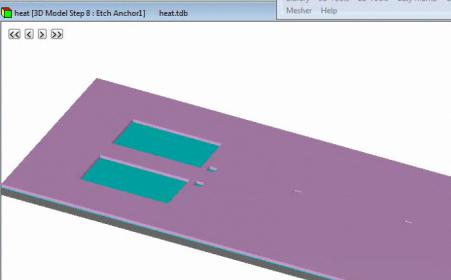
One step in a MEMS process for the heat actuator layout
The Finite Element Simulators may not be able to fully or quickly simulate what you’ve modeled, so you can simplify the exported model to speed up mechanical simulation.
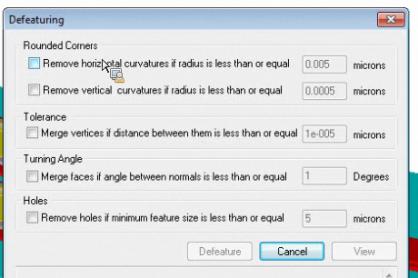
Defeaturing options to speed up mechanical simulations
Shape Recovery is where you read a GDS file and recover curves for circular objects.
Library of devices – these are generators to automate MEMS layout that are DRC correct.
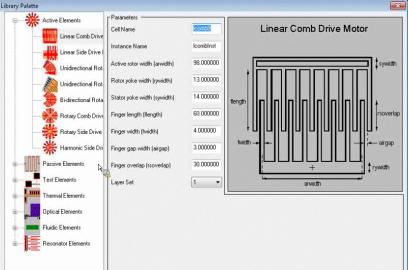
Linear Comb Motor Drive – Library Example
Fluidic elements are automated and useful for waveguides too in microwave. This library can be customized per foundry as you need, and it even uses design rule driven constraints, not just drawing shapes.
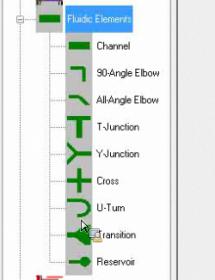
Using S-Edit for electronic schematics with both electronics and MEMS devices. There’s a library of electro-mechanical elements, thermal elements. A Gyroscope example was shown, and you can also choose from magnetic elements in the library.
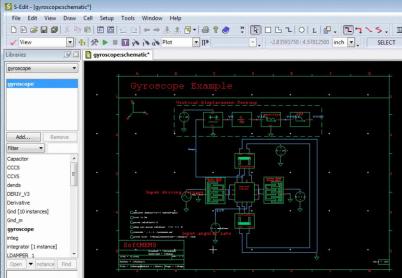
Mixing mechanical elements with electronic components. Mechanical connections to Linear Comb Drive, plus an AC voltage source stimulating the Comb Drive.
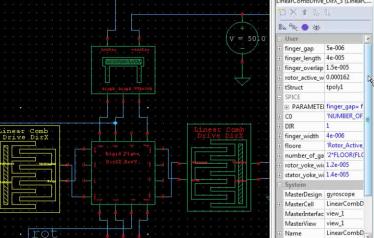
MEMS Gyroscope is modeled as a plate, two comb drives and spring. The output of the gyroscope is an electrical signal to describe z displacement. A T-Spice library of components is used to model signal processing. You can describe your simulation models in: C, SPICE.
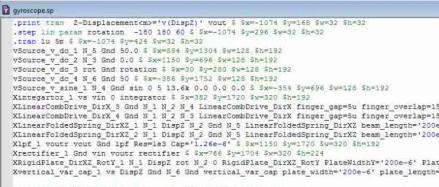
SPICE Netlist of MEMS IC
The Linear Comb Drive is parameterized and easily changed by filling out a form, instead of hand editing polygons.
Simulation output of the Gyroscope in T-Spice was shown as two waveforms. The lower half is the output of the Gyroscope, and the top plot is the Z displacement. You can simulate both electronics and MEMS in one tool, T-Spice. This simulation allows you to find and eliminate any issues between MEMS and electronics.
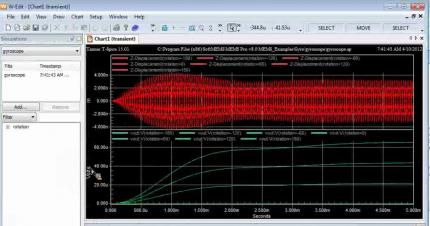
SoftMEMS has a Compact Model Builder that reads the 3D Finite Element Simulation results and then automatically creates Verilog, SPICE and Matlab models. In Tanner you can simulate the SPICE and Verilog models.
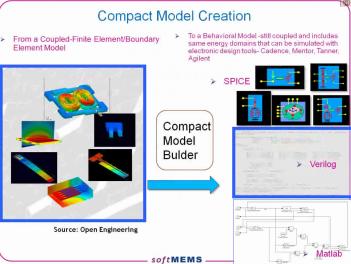
You can do a top-down or bottom-up flow for MEMS and electronics with the tools from SoftMEMS and Tanner EDA.
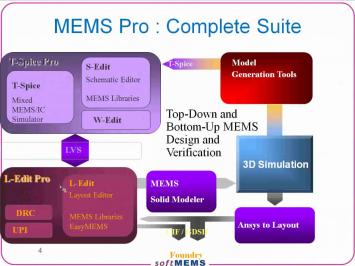
A bottom up flow would start in L-Edit where your create MEMS layout, while a top down flow would start in S-Edit where you create SPICE models first.
Q&A:
Q: Can you import process step sequences?
A: Yes, it’s possible to import each fabrication process step. Use an XML format to import. You can export to Excel as well. You can take one of our examples and change to fit your fab process.
Q: Can you import equations for solid modeling?
A: Yes, our models are tuned for doing things like rounded corners and formal deposition. You can turn these options on or off. The Finite Element simulators are slowed down by modeling things like rounded corners. It’s your choice to turn these options on or off.
Q: If I have a proprietary MEMS process then how do I use this flow?
A: MEMSCap and Sandia National Labs processes – we use MEMS design kits in conjunction with Tanner. We can create a design kit or reference kit for you, with the foundry (like CMOS MEMS). Bosch is a customer and we’ve created many MEMS design kits for their designers.
Q: Any products designed with Tanner and SoftMEMS?
A: Diverse range of customers: MEMSIC, Knowles (microphone in cell phones, 1 billion units).
Q: Are electronic and MEMS components fabricated separately?
A: There are various ways. Companies like Motorola, Bosch and ST can integrate both MEMS and IC on the same chip, others have combined MEMS and ASIC together on a board or chip stacking (Apple iPhone for example). SoftMEMS has customers using all of these techniques (two chip, or integrated chip).
Summary
A combination of tools from SoftMEMS, Tanner EDA and mechanical simulation companies will give you the design and analysis capabilities to create MEMS with IC that operate correctly on the first spin by using simulation and analysis. View the full webinar here.







Comments
There are no comments yet.
You must register or log in to view/post comments.